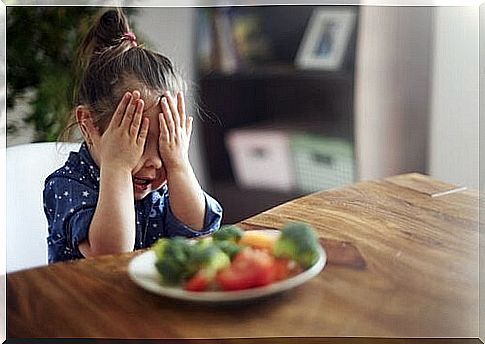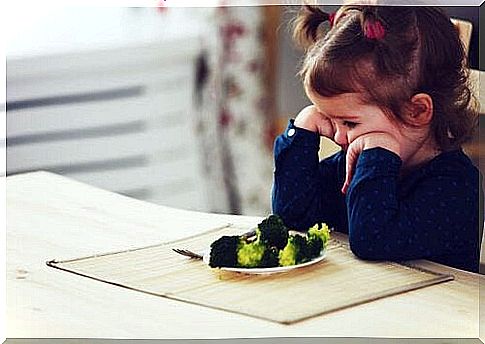Food Neophobia, What Is It?

The No food eofobia is defined as fear or refusal to try new foods. We are talking about a behavior characteristic of the developmental stage of children. The food neofobia refers to the rejection of new food products.
Sharing a meal with family or friends is usually a pleasant occasion, and in most cultures, it is synonymous with celebration and celebration. An excellent experience… unless there is a person with food neophobia in the family. In that case the meal can turn into a suffocating, chaotic moment that will require negotiation.
The act of eating itself is often thought of as a very easy process. It is just a matter of putting food in your mouth, chewing and swallowing. In reality, this is an extremely complex process that can turn into a real challenge for many, as it requires the cooperation and coordination of numerous body systems.
Why does food neophobia occur?
Resistance to try new foods is a typical feature of all omnivorous animals, including humans. This is an innate survival reaction to potential toxic foods. When faced with an unknown food, the normal reaction is the precaution, which leads us to always opt, if possible, for known foods. Only after trying a new food several times is it accepted as a safe food.

Another hypothesis concerns the discovery of flavors. Man has receptors for four basic flavors: salty, bitter, sour and sweet. Sweet and salty flavors are by nature the favorite from birth. The sweetness present in newborns is generally higher in the first stage of life.
The discovery of flavors begins even before coming into the world. Some flavors that the fetus feeds on during pregnancy are in fact a favorite when it is born. In addition to pregnancy, another stage in which the baby discovers the flavors is breastfeeding. Some flavors, in fact, pass through breast milk. Exposure to flavors at an early age therefore becomes the first lesson that the child learns about it.
What are the characteristics of food neophobia?
Food neophobia appears mainly in two critical age periods: weaning (4-8 months) and the autonomy period (15-36 months). In the first case, the mother-child bond favors the overcoming of neophobia as the child feels protected by his parents. The most problematic period is that starting from 15 months, when the baby starts walking.
One of the characteristics of food neophobia is negative palatability, or the prejudice that a food tastes bad before tasting it. This is why it is important to create positive experiences related to new foods. A great tip is imitation: if the child sees that the parent eats a certain food and likes it, he will be more likely to decide to try it.
Rejection of food occurs more in the following cases:
- Food of animal origin versus non-animal food
- Raw food versus cooked food
- Sour or bitter food compared to sweet food
How should you behave with a child with food neophobia?
Studies show that parents’ attitudes towards the child’s behavior have repercussions on the development of their food preferences. To ensure a proper diet, parents need to pay attention to their approach to food.
For example, a restrictive attitude towards tasty foods will lead the child to prefer them; an imposing attitude towards a food will achieve the exact opposite.

Creating pleasant situations in which the child shares the experience with the parent tends to have positive feedback for the consumption of a food. All this confirms the importance of the parental response to the feeding behavior of their children in order to determine the development of healthy food preferences.
Regardless of what is described, food neophobia tends to decrease as the child approaches five or six years of age. Knowing that he just needs time to overcome this difficulty becomes the stimulus to support him with safety and confidence, facilitating the acquisition of healthy habits.









